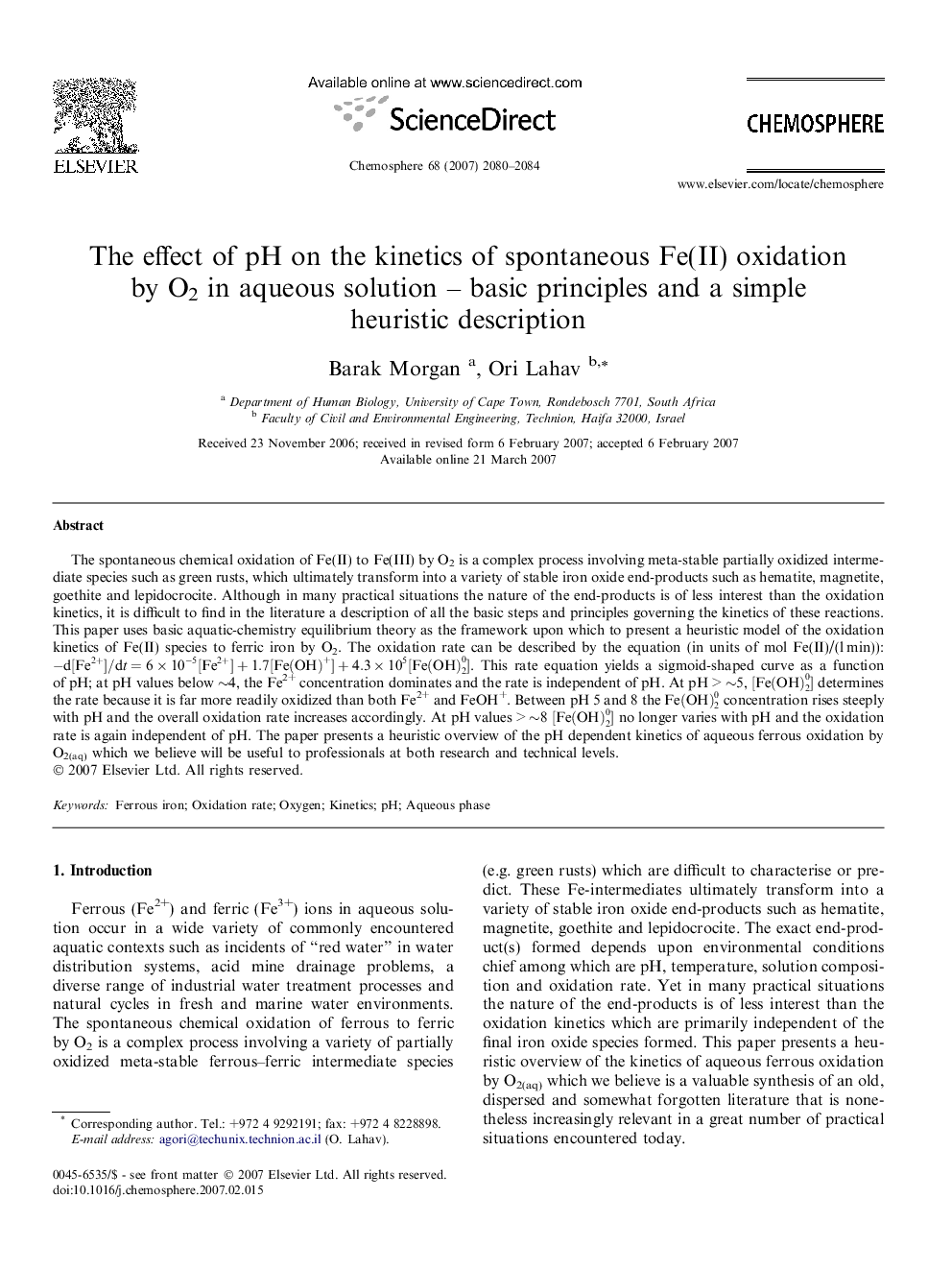| Article ID | Journal | Published Year | Pages | File Type |
|---|---|---|---|---|
| 4415355 | Chemosphere | 2007 | 5 Pages |
The spontaneous chemical oxidation of Fe(II) to Fe(III) by O2 is a complex process involving meta-stable partially oxidized intermediate species such as green rusts, which ultimately transform into a variety of stable iron oxide end-products such as hematite, magnetite, goethite and lepidocrocite. Although in many practical situations the nature of the end-products is of less interest than the oxidation kinetics, it is difficult to find in the literature a description of all the basic steps and principles governing the kinetics of these reactions. This paper uses basic aquatic-chemistry equilibrium theory as the framework upon which to present a heuristic model of the oxidation kinetics of Fe(II) species to ferric iron by O2. The oxidation rate can be described by the equation (in units of mol Fe(II)/(l min)): -d[Fe2+]/dt=6×10-5[Fe2+]+1.7[Fe(OH)+]+4.3×105[Fe(OH)20]. This rate equation yields a sigmoid-shaped curve as a function of pH; at pH values below ∼4, the Fe2+ concentration dominates and the rate is independent of pH. At pH > ∼5, [Fe(OH)20] determines the rate because it is far more readily oxidized than both Fe2+ and FeOH+. Between pH 5 and 8 the Fe(OH)20 concentration rises steeply with pH and the overall oxidation rate increases accordingly. At pH values > ∼8 [Fe(OH)20] no longer varies with pH and the oxidation rate is again independent of pH. The paper presents a heuristic overview of the pH dependent kinetics of aqueous ferrous oxidation by O2(aq) which we believe will be useful to professionals at both research and technical levels.
